Here are the highlights from the current issue of Development:
A new paradigm for Wnt/β-catenin signalling

The Wnt/β-catenin signalling pathway is a key pathway involved in a myriad of developmental processes, from body axis patterning to cell migration and fate specification. The role of the Wnt pathway is to regulate transcription of specific target genes, and it has long been thought that the driving event for this is the recruitment of β-catenin to specific gene loci on the chromatin. Now, however, on p. 1914, Stefan Hoppler and colleagues provide in vivo evidence that, rather than β-catenin recruitment, it is instead the context-specific events that occur subsequent to β-catenin binding that enable gene-specific regulation. The authors use ChIP-seq to show that β-catenin is recruited to many genomic loci in Xenopus early embryonic development, while RNA-seq reveals that many of these β-catenin-bound loci are not transcriptionally regulated by Wnt signalling in this context. Instead, the transcriptional response depends on the presence or absence of additional mechanisms, for example FGF and BMP signalling. This important study advances the current understanding and interpretation of how Wnt/β-catenin signalling operates to regulate gene-specific transcription in different developmental contexts.
Oocyte maturation: cAMP and PKA called into question

The production of a mature vertebrate egg is a lengthy process in which the developing oocyte undergoes meiotic arrest followed by a long incubation period, before finally resuming meiosis in preparation for ovulation. The prevailing dogma in the field has been that, in Xenopus, meiotic arrest is released through a drop in cyclic adenosine monophosphate (cAMP) levels and protein kinase A (PKA) activity, which occurs following exposure to progesterone. In this issue (p. 1926), Khaled Machaca and colleagues provide evidence that challenges this dogma, as they demonstrate that no change is detectable in cAMP levels and PKA activity as meiotic arrest is released in the Xenopus oocyte. The authors use in vivo reporters to detect cAMP and PKA levels in real time in single cells, and show that there is no correlation between the rate of meiotic resumption and levels of cAMP or PKA inhibition. Furthermore, the authors develop conditions in which meiotic release is indeed possible in the presence of high levels of cAMP. These surprising results provide a new model for the release of meiotic arrest in the Xenopus oocyte and suggest that this phenomenon occurs through a positive signal downstream of the progesterone receptor that overcomes cAMP/PKA inhibition of meiosis resumption.
Uncovering the mechanisms of Müller glia activation
Radial glia cells in the central nervous system serve as an important source of progenitor cells for generating a range of neural cell types. Retinal regeneration in vertebrates relies on a specialised type of radial glia, called Müller glia, which are normally quiescent but can be stimulated to undergo proliferation and differentiation in order to generate new neurons. In this issue (p. 1859 and p. 1874), two studies shed light on the molecular mechanisms that regulate Müller glia activation and proliferation in response to injury and in different vertebrate species.
 In the first study, Andy Fischer and colleagues investigate the role of mTor signalling in the formation of Müller glia-derived progenitor cells (MGPCs) in the chick retina. The authors use NMDA to induce a cytotoxic response, and observe that mTor signalling is transiently activated upon activation of Müller glia cells. Inhibition of mTor signalling in vivo prevents the proliferation of the Müller glia cells and blocks the regenerative response. Using a range of inhibitors and readouts, the authors show that mTor signalling is required for the proliferation of MGPCs. The authors further show that mTor signalling is activated in response to insulin, IGF1 and FGF2, and that this response is most likely independent of the MAPK pathway.
In the first study, Andy Fischer and colleagues investigate the role of mTor signalling in the formation of Müller glia-derived progenitor cells (MGPCs) in the chick retina. The authors use NMDA to induce a cytotoxic response, and observe that mTor signalling is transiently activated upon activation of Müller glia cells. Inhibition of mTor signalling in vivo prevents the proliferation of the Müller glia cells and blocks the regenerative response. Using a range of inhibitors and readouts, the authors show that mTor signalling is required for the proliferation of MGPCs. The authors further show that mTor signalling is activated in response to insulin, IGF1 and FGF2, and that this response is most likely independent of the MAPK pathway.
 In the second study, Joachim Wittbrodt and colleagues look at the role of a single factor, Atoh7, in directing Müller glia cells to proliferate and differentiate in the absence of an injury. The authors use a fluorescent transcriptional reporter of atoh7 to demonstrate atoh7 expression in proliferating Müller glia cells after retinal injury in medaka. The authors then use an inducible system to activate expression of atoh7 in vivo in the Müller glia cells, and find that this is sufficient to drive the cells to re-enter the cell cycle and undergo proliferation. Forced expression of atoh7 in these cells activates Notch signalling, and indeed the authors show that overexpression of the Notch intracellular domain can recapitulate the effects seen by atoh7 overexpression. Importantly, not only did atoh7 overexpression in Müller glia lead to cell cycle re-entry and proliferation, but the authors also observed the formation of neurogenic clusters and subsequent de novo neurogenesis following atoh7 overexpression in these cells. Together, these two studies bring together novel and exciting findings regarding the regulation of Müller glia proliferation following injury and the subsequent regenerative response.
In the second study, Joachim Wittbrodt and colleagues look at the role of a single factor, Atoh7, in directing Müller glia cells to proliferate and differentiate in the absence of an injury. The authors use a fluorescent transcriptional reporter of atoh7 to demonstrate atoh7 expression in proliferating Müller glia cells after retinal injury in medaka. The authors then use an inducible system to activate expression of atoh7 in vivo in the Müller glia cells, and find that this is sufficient to drive the cells to re-enter the cell cycle and undergo proliferation. Forced expression of atoh7 in these cells activates Notch signalling, and indeed the authors show that overexpression of the Notch intracellular domain can recapitulate the effects seen by atoh7 overexpression. Importantly, not only did atoh7 overexpression in Müller glia lead to cell cycle re-entry and proliferation, but the authors also observed the formation of neurogenic clusters and subsequent de novo neurogenesis following atoh7 overexpression in these cells. Together, these two studies bring together novel and exciting findings regarding the regulation of Müller glia proliferation following injury and the subsequent regenerative response.
PLUS…
Cell fate control by pioneer transcription factors

Recent studies have shown that pioneer factors are crucial for cellular reprogramming and that they are implicated in the marked changes in gene regulatory networks that occur in various cancers. Here, Makiko Iwafuchi-Doi and Kenneth Zaret provide an overview of the contexts in which pioneer factors function, how they can target silent genes, and their limitations at regions of heterochromatin. See the Development at a Glance poster article on p. 1833
Circular RNAs: analysis, expression and potential functions
 In early 2012, circular RNA (circRNA) was shown to be a transcriptional product in thousands of human and mouse genes and in hundreds of cases constituted the dominant RNA isoform. Subsequent studies revealed that the expression of circRNAs is developmentally regulated, tissue and cell-type specific, and shared across the eukaryotic tree of life, suggesting important functions for these molecules. Here, Steven Barrett and Julia Salzman describe major advances in the field of circRNA biology, focusing on the regulation of and functional roles played by these molecules. See the Primer on p. 1838
In early 2012, circular RNA (circRNA) was shown to be a transcriptional product in thousands of human and mouse genes and in hundreds of cases constituted the dominant RNA isoform. Subsequent studies revealed that the expression of circRNAs is developmentally regulated, tissue and cell-type specific, and shared across the eukaryotic tree of life, suggesting important functions for these molecules. Here, Steven Barrett and Julia Salzman describe major advances in the field of circRNA biology, focusing on the regulation of and functional roles played by these molecules. See the Primer on p. 1838
The regulation and plasticity of root hair patterning and morphogenesis
 Root hairs are highly specialized cells found in the epidermis of plant roots that play a key role in providing the plant with water and mineral nutrients. Many studies have shown that the fate of root epidermal cells, which differentiate into either root hair or non-hair cells, is determined by a complex interplay of intrinsic and extrinsic cues. Here, Wolfgang Schmidt and colleagues review these studies and discuss recent evidence suggesting that environmental information can be integrated at multiple points in the root hair morphogenetic pathway and affects multifaceted processes at the chromatin, transcriptional and post-transcriptional levels. See the Review on p. 1848
Root hairs are highly specialized cells found in the epidermis of plant roots that play a key role in providing the plant with water and mineral nutrients. Many studies have shown that the fate of root epidermal cells, which differentiate into either root hair or non-hair cells, is determined by a complex interplay of intrinsic and extrinsic cues. Here, Wolfgang Schmidt and colleagues review these studies and discuss recent evidence suggesting that environmental information can be integrated at multiple points in the root hair morphogenetic pathway and affects multifaceted processes at the chromatin, transcriptional and post-transcriptional levels. See the Review on p. 1848
 (No Ratings Yet)
(No Ratings Yet)
 Loading...
Loading...
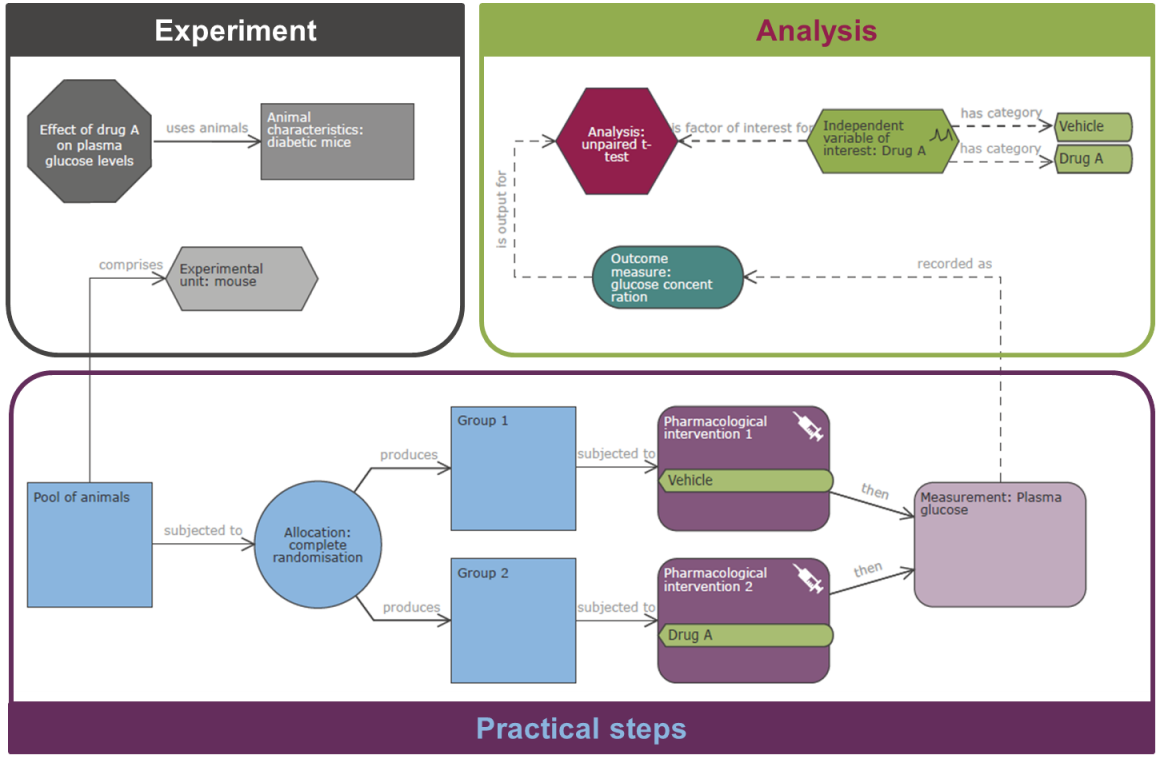


 (3 votes)
(3 votes)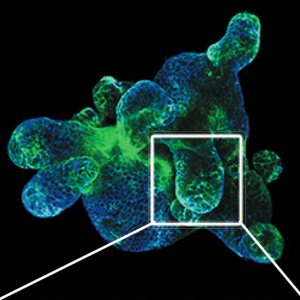
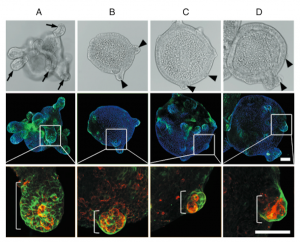
 (No Ratings Yet)
(No Ratings Yet)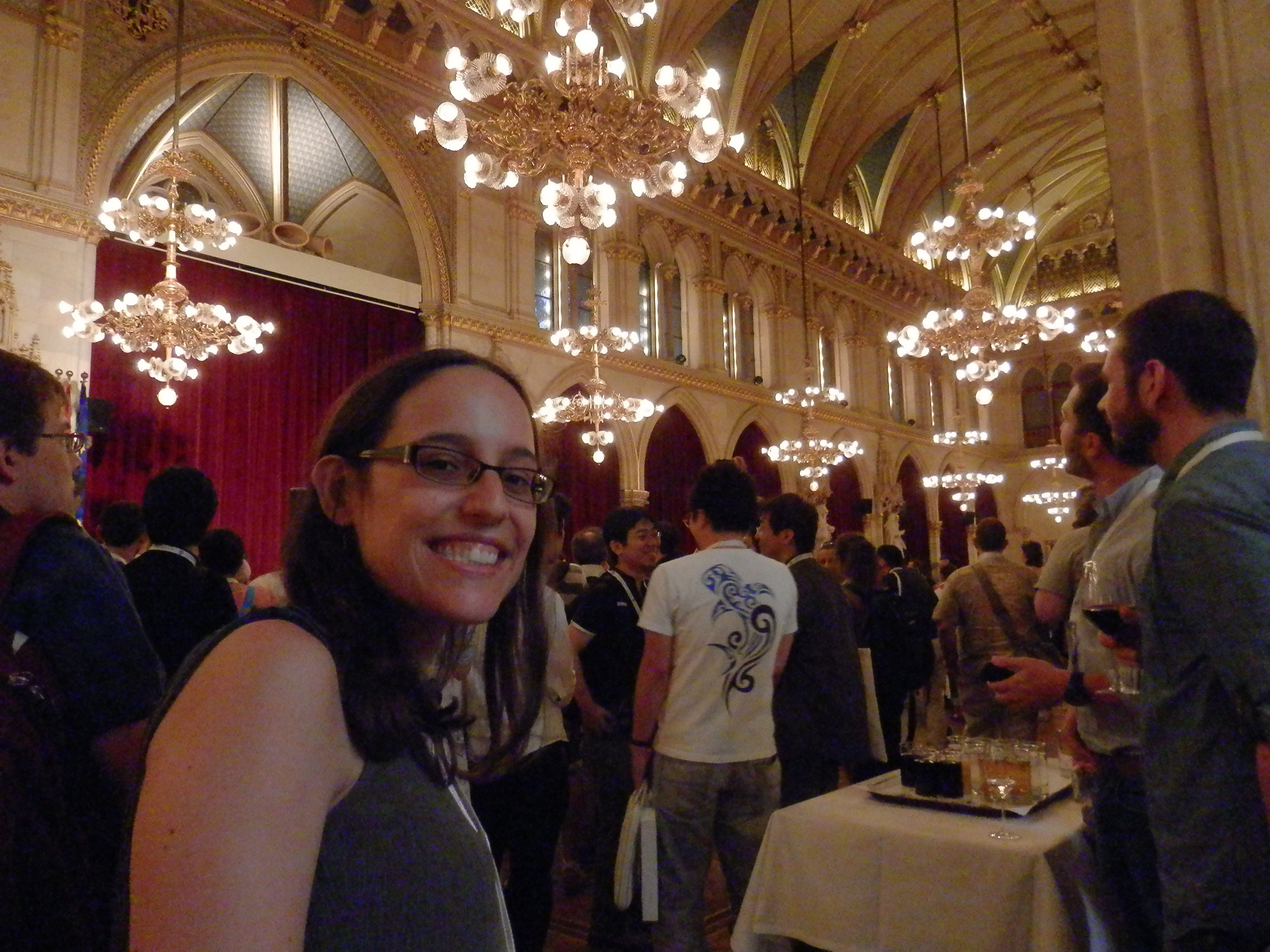 May was most notable for the departure of the Node’s brilliant Community Manager, Cat Vicente. Cat said her goodbyes
May was most notable for the departure of the Node’s brilliant Community Manager, Cat Vicente. Cat said her goodbyes 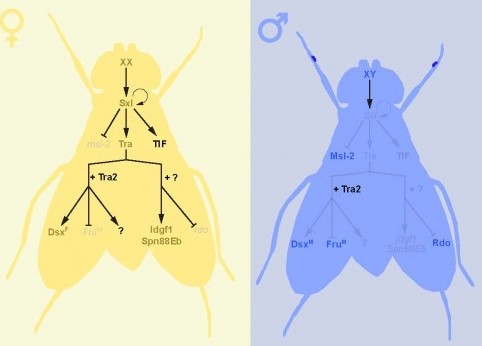 Elizabeth posted on
Elizabeth posted on 
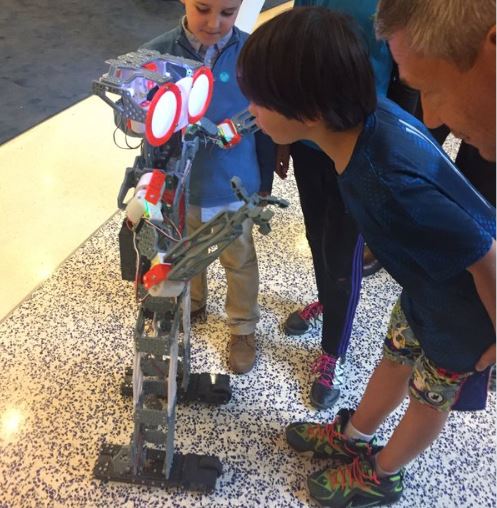 Nestor got involved with the recent ‘
Nestor got involved with the recent ‘


 In the first study, Andy Fischer and colleagues investigate the role of mTor signalling in the formation of Müller glia-derived progenitor cells (MGPCs) in the chick retina. The authors use NMDA to induce a cytotoxic response, and observe that mTor signalling is transiently activated upon activation of Müller glia cells. Inhibition of mTor signalling in vivo prevents the proliferation of the Müller glia cells and blocks the regenerative response. Using a range of inhibitors and readouts, the authors show that mTor signalling is required for the proliferation of MGPCs. The authors further show that mTor signalling is activated in response to insulin, IGF1 and FGF2, and that this response is most likely independent of the MAPK pathway.
In the first study, Andy Fischer and colleagues investigate the role of mTor signalling in the formation of Müller glia-derived progenitor cells (MGPCs) in the chick retina. The authors use NMDA to induce a cytotoxic response, and observe that mTor signalling is transiently activated upon activation of Müller glia cells. Inhibition of mTor signalling in vivo prevents the proliferation of the Müller glia cells and blocks the regenerative response. Using a range of inhibitors and readouts, the authors show that mTor signalling is required for the proliferation of MGPCs. The authors further show that mTor signalling is activated in response to insulin, IGF1 and FGF2, and that this response is most likely independent of the MAPK pathway. In the second study, Joachim Wittbrodt and colleagues look at the role of a single factor, Atoh7, in directing Müller glia cells to proliferate and differentiate in the absence of an injury. The authors use a fluorescent transcriptional reporter of atoh7 to demonstrate atoh7 expression in proliferating Müller glia cells after retinal injury in medaka. The authors then use an inducible system to activate expression of atoh7 in vivo in the Müller glia cells, and find that this is sufficient to drive the cells to re-enter the cell cycle and undergo proliferation. Forced expression of atoh7 in these cells activates Notch signalling, and indeed the authors show that overexpression of the Notch intracellular domain can recapitulate the effects seen by atoh7 overexpression. Importantly, not only did atoh7 overexpression in Müller glia lead to cell cycle re-entry and proliferation, but the authors also observed the formation of neurogenic clusters and subsequent de novo neurogenesis following atoh7 overexpression in these cells. Together, these two studies bring together novel and exciting findings regarding the regulation of Müller glia proliferation following injury and the subsequent regenerative response.
In the second study, Joachim Wittbrodt and colleagues look at the role of a single factor, Atoh7, in directing Müller glia cells to proliferate and differentiate in the absence of an injury. The authors use a fluorescent transcriptional reporter of atoh7 to demonstrate atoh7 expression in proliferating Müller glia cells after retinal injury in medaka. The authors then use an inducible system to activate expression of atoh7 in vivo in the Müller glia cells, and find that this is sufficient to drive the cells to re-enter the cell cycle and undergo proliferation. Forced expression of atoh7 in these cells activates Notch signalling, and indeed the authors show that overexpression of the Notch intracellular domain can recapitulate the effects seen by atoh7 overexpression. Importantly, not only did atoh7 overexpression in Müller glia lead to cell cycle re-entry and proliferation, but the authors also observed the formation of neurogenic clusters and subsequent de novo neurogenesis following atoh7 overexpression in these cells. Together, these two studies bring together novel and exciting findings regarding the regulation of Müller glia proliferation following injury and the subsequent regenerative response.
 In early 2012, circular RNA (circRNA) was shown to be a transcriptional product in thousands of human and mouse genes and in hundreds of cases constituted the dominant RNA isoform. Subsequent studies revealed that the expression of circRNAs is developmentally regulated, tissue and cell-type specific, and shared across the eukaryotic tree of life, suggesting important functions for these molecules. Here,
In early 2012, circular RNA (circRNA) was shown to be a transcriptional product in thousands of human and mouse genes and in hundreds of cases constituted the dominant RNA isoform. Subsequent studies revealed that the expression of circRNAs is developmentally regulated, tissue and cell-type specific, and shared across the eukaryotic tree of life, suggesting important functions for these molecules. Here,  Root hairs are highly specialized cells found in the epidermis of plant roots that play a key role in providing the plant with water and mineral nutrients. Many studies have shown that the fate of root epidermal cells, which differentiate into either root hair or non-hair cells, is determined by a complex interplay of intrinsic and extrinsic cues. Here, Wolfgang Schmidt and colleagues review these studies and discuss recent evidence suggesting that environmental information can be integrated at multiple points in the root hair morphogenetic pathway and affects multifaceted processes at the chromatin, transcriptional and post-transcriptional levels. See the Review on p.
Root hairs are highly specialized cells found in the epidermis of plant roots that play a key role in providing the plant with water and mineral nutrients. Many studies have shown that the fate of root epidermal cells, which differentiate into either root hair or non-hair cells, is determined by a complex interplay of intrinsic and extrinsic cues. Here, Wolfgang Schmidt and colleagues review these studies and discuss recent evidence suggesting that environmental information can be integrated at multiple points in the root hair morphogenetic pathway and affects multifaceted processes at the chromatin, transcriptional and post-transcriptional levels. See the Review on p.